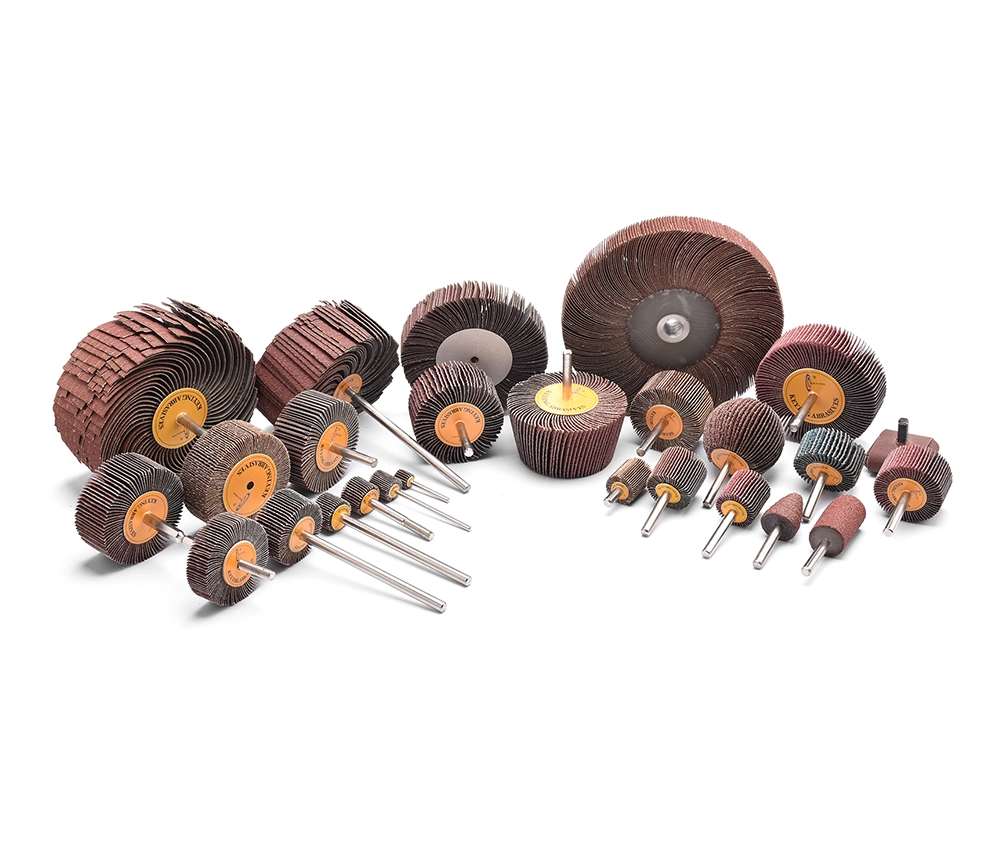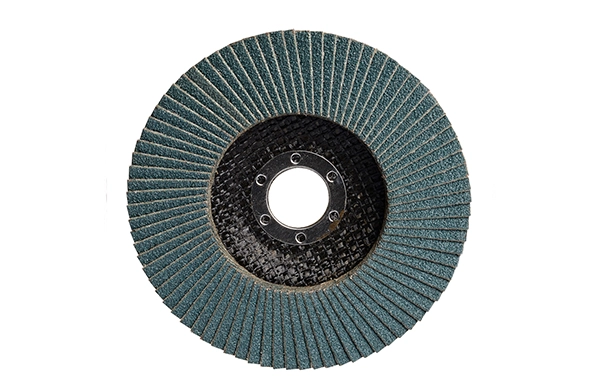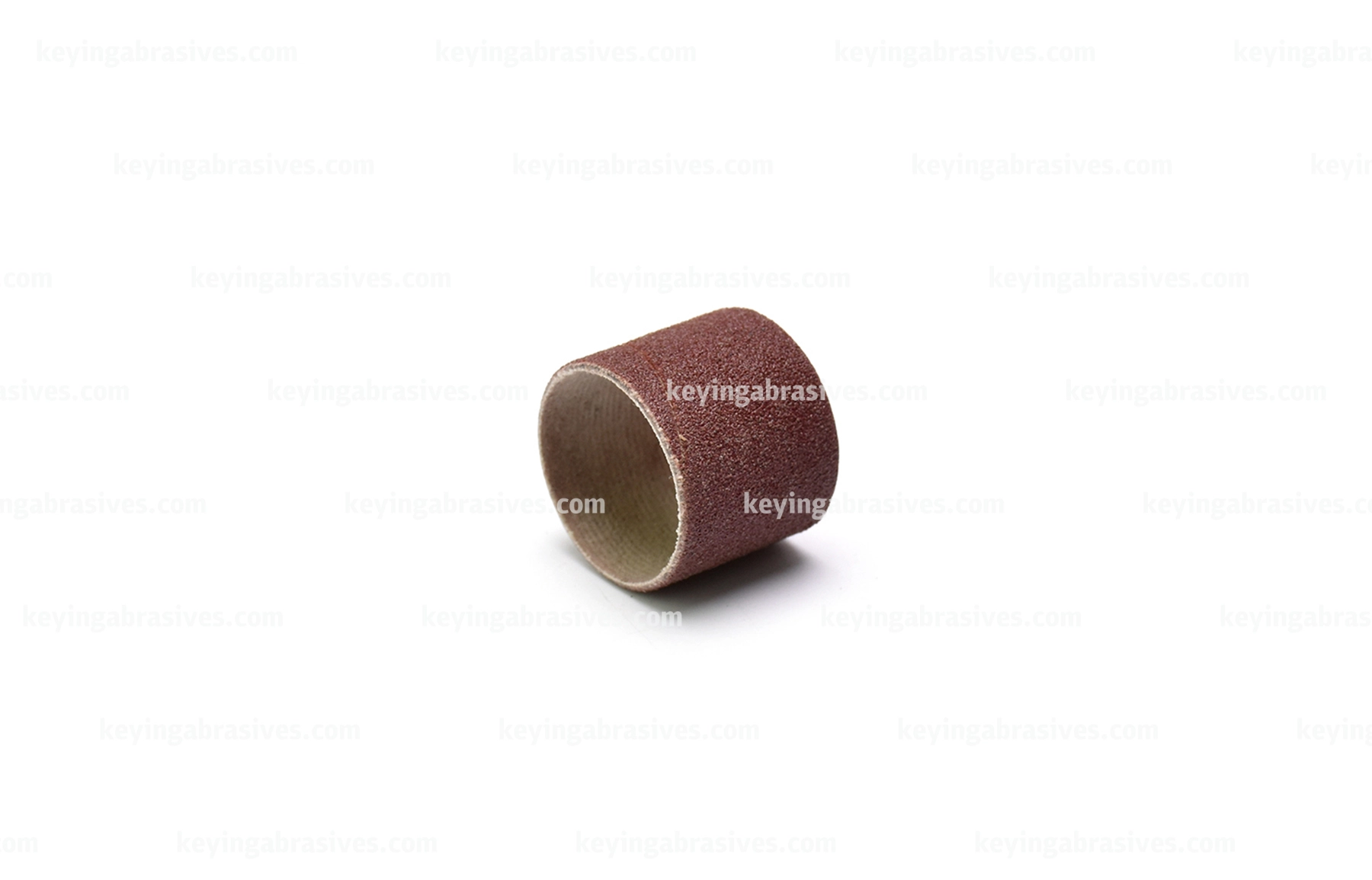
Dec 20-2017
The sanding wheel is the most important type of abrasive tool in the grinding process. The sanding wheel is a porous body made by adding a binder to abrasives and then pressing, drying, and calcining. Because of the differences in abrasives, binders, and manufacturing processes, sanding wheels have great differences in characteristics, which have important influences on the processing quality, productivity, and economy of grinding. The characteristics of sanding wheels mainly depend on factors such as abrasives, granularity, binders, hardness, organization, shape, and size.
It is mainly related to the surface roughness and productivity of processed parts. When rough grinding is carried out, the grinding allowance is large and the required surface roughness value is relatively large, so coarse abrasives should be selected. Because the coarse abrasives and the pores are large, the grinding depth is greater, and the sanding wheel is not easy to block and heat. When precision grinding is carried out, the allowance is small and the required roughness value is low, so finer abrasives can be selected. Generally, the finer the abrasive, the better the surface roughness of the grinding.
The hardness of the sanding wheel refers to the firmness of the abrasives and binders attached to the surface of the sanding wheel. A soft sanding wheel indicates that the abrasive of the flap wheel sanding disc for the drill is easy to fall off, and a hard sanding wheel indicates that the abrasive is difficult to fall off. The hardness of the sanding wheel and the hardness of the abrasive are two different concepts. The same abrasive can be made into different hardness sanding wheels, which mainly depends on the performance and quantity of the binder and the manufacturing process of the sanding wheel. The significant difference between grinding and cutting is that the sanding wheel has a "self-sharpening" property. Choosing the hardness of the sanding wheel is actually choosing the self-sharpening of the sanding wheel. We hope that the still sharp abrasives will not fall off too early, and do not become dull and still not fall off. The general principle of selecting the hardness of the sanding wheel is: when processing soft metals, in order to prevent the abrasive from falling off too early, a hard sanding wheel should be selected; when processing hard metals, in order to timely remove the dull abrasive grains and expose new abrasive grains with sharp edges and corners (namely, self-sharpening), a soft sanding wheel should be selected. The former is because when grinding soft materials, the abrasives of the sanding wheel wear slowly and do not need to detach too early; the latter is because when grinding hard materials, the abrasives of the sanding wheel wear quickly and need to be updated quickly. When precision grinding is carried out, a slightly harder sanding wheel should be selected to ensure the accuracy and roughness of grinding. When the thermal conductivity of the workpiece material is poor and burn and crack easily occur (such as grinding hard alloys), a slightly softer sanding wheel should be selected.
The organization of the sanding wheel refers to the proportion of the volume of abrasives, binders and pores that make up the sanding wheel. Usually, it is classified according to the percentage of the volume of abrasives in the sanding wheel. There are three types of structures: tight, medium and loose; they are further subdivided into 0-14 grades, a total of 15 levels. The smaller the organization number, the larger the proportion of abrasives in the sanding wheel, and the tighter the sanding wheel; conversely, the larger the organization number, the smaller the proportion of abrasives, and the looser the sanding wheel.
Sanding wheels are made into various shapes and sizes according to the structure of the machine tool and the needs of grinding. The outer diameter of the sanding wheel should be as large as possible to increase the circumferential speed of the sanding wheel, which is beneficial to improve the productivity and surface roughness of grinding. In addition, under the conditions of machine tool rigidity and power permit, selecting a sanding wheel with a wider width can also achieve the effect of improving productivity and reducing roughness. However, when grinding materials with high thermal sensitivity to avoid burning and cracking on the surface of the workpiece, the width of the sanding wheel should be appropriately reduced.

.webp)
